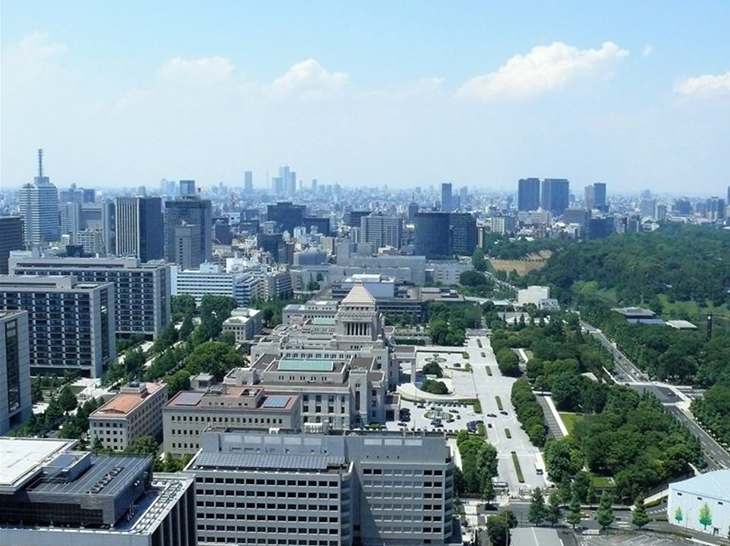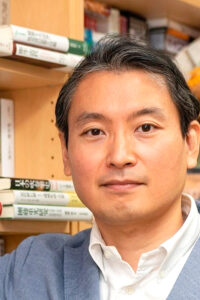Party Politics, Factions, and Hereditary Politics: The Current State of Japanese Politics

“The existence of hereditary members is emblematic of this unchanging central-regional political structure. The electoral reform of 1994 was expected to reduce the organizational power of the sponsoring organizations by changing the district system, thereby decreasing the number of hereditary members. However…”
Shimizu Yuichiro, Professor, Keio University
Factional politics have once again become an issue. It was discovered that the largest faction, the Abe faction (Seiwa Political Analysis Council, Seiwakai), has engaged in fraudulent accounting with regard to political funding to the party. Moreover, it was found that the Nikai faction (Shisuikai), led by shrewd former secretary-general Nikai Toshihiro, and the Kishida faction (Kochikai), to which the current prime minister belongs, have had similar problems. The revelations have prompted strong criticism of factional politics.
In response, Prime Minister Kishida Fumio quickly announced that he would dissolve his faction, Kochikai. Kochikai was founded by Ikeda Hayato (1899–1965), known for his Income Doubling Plan. As it inherits the lineage of Yoshida Shigeru’s (1878–1967) Liberal Party, it considers itself part of the “conservative mainstream” and is the third faction, which has produced five prime ministers as well as two Party presidents in its nearly 70 year-old history. Following this, the Abe faction, which stems from the Japan Democratic Party led by Kishi Nobusuke (1896–1987) and has produced four prime ministers in 45 years, the Nikai faction, which has gained momentum in recent years, and the Moriyama faction (Research Council for Near Future Politics), which has a small but strong presence, have also been dissolved. The spring of 2024 has become a historic season that has shaken the Liberal Democratic Party (LDP), which has dominated Japanese politics since the end of World War II.
It is said that the factions within the LDP Party have three main functions. The first is raising and distributing money, which is the issue this time, the second is post acquisition and distribution, including candidate endorsement, and the third is policy research. Factions will use these capabilities to increase their influence and aim for their leader to become prime minister and LDP president.
Firstly, let us take a look at fund raising and distribution. In postwar Japanese politics, “politics and money” have long been regarded as an issue. As a result, two major political reforms were implemented in 1994. The first was a reform of the flows of political funds. New taxpayer-funded political party grants were established, and a system was introduced by which they were distributed from the party headquarters to the party branches.
Why is so much political funding needed? This is because of the electoral system, which gave cause for the second reform. In Japan, a medium-sized district system was adopted for about 70 years from 1925, when universal male suffrage was introduced, to 1993, with a brief break immediately after the end of the war. The system was a combined single-seat district system, in which members of the ruling party were elected, that created medium-sized districts with three to five seats.
As a result, multiple candidates belonging to the same party will run from the single-seat district system, each wanting to somehow obtain the party’s endorsement. New candidates who want to obtain an endorsement gather under the leadership of senior Party members, with the endorsement function being exercised by their number and the leader’s power. This is how factions form within a party.
Following the chaos of the postwar period, when the Liberal Party and the Japan Democratic Party merged to form the LDP in 1955, the factions of both parties gathered in that one party, giving rise to eight powerful factions. The factions strive to make their leaders prime minister and LDP president. In order to do so, they need to secure influence by winning posts within the party, the House of Representatives, and the government. As a foundation for this, they absolutely needed to increase their number of Diet members.
Individual Diet members followed a similar structure. In order to be elected under the medium-sized district system, they had to bring benefits to their local areas and expand their support base even after becoming part of a powerful faction, being endorsed, and being elected. Additionally, it was necessary to support their sponsoring organizations and the local councillors who organize them. In addition to elections, building relationships from day to day cost a considerable amount of money. It was the factions that provided the funds for such opaque uses, and for that reason alone, the factions’ ability to collect money was indispensable to LDP politics. The 1994 political reform sought to solve the problem of politics and money by reducing the cost of politics by switching to the mixed member proportional representation system and curbing the influence of factions by altering the flows of political funds.
However, long-entrenched practices are not so easily corrected. Even if reforms are carried out in central politics, it takes time for them to trickle down into local politics. Indeed, the problems surrounding political funding continued after that. However, it was understood that no major problems would arise anymore, so the issue this time around occurred exactly where one might expect.
The existence of hereditary members is emblematic of this unchanging central-regional political structure.[1] The large number of hereditary members who inherit their electoral base from relatives is known as a feature of Japanese politics, rare among developed countries.[2] The electoral reform of 1994 was expected to reduce the organizational power of the sponsoring organizations by changing the district system, thereby decreasing the number of hereditary members. However, in reality, the number of hereditary members continued to increase under the mixed member proportional representation system.
Why was this? Election campaigns have intensified under the single-seat district system where one seat is up for grabs, and the electoral districts in local areas have become larger in order to rectify vote value disparity. In order to win elections amid increasingly difficult conditions, high hopes are placed with relatives who can inherit an electoral base, political funds, and prestige smoothly from their predecessors.
Trepidation can also be heard from the inheriting relatives. Some get into politics after observing their parents, but it is natural for many not to want to take on such a role. Many have had to be asked repeatedly and only begrudgingly gave up their own careers to finally run for office.
Even if you compete on the back of the prestige of your predecessor, you will still have to fight an uphill battle in your first election campaign. When that happens, the members of the faction to which your predecessor belonged will support you. The new hereditary members elected with their support are also incorporated into the faction structure. This makes it difficult to change the structure of Japanese politics.[3]
Prime Minister Kishida’s push to dissolve the factions may partly be seen as advantageous to his own administration. Meanwhile, the second Aso faction and the fourth Motegi faction emphasize the factions’ third function, which is the ability to conduct policy research, and insist on maintaining the factions. This is an important function for making the most of party politics. However, as can be seen from the hereditary structure described above, the main reason for belonging to a faction is the electoral situation, not their proximity to policy.
There is also a movement to form new policy groups centered on influential young Diet members. The number of independents is also increasing, working hard to legislate across factional and party divides. Japanese politics is currently at a turning point.
Translated from an original article in Japanese written for Discuss Japan. [March 2024]
Keywords
- Shimizu Yuichiro
- Keio University
- Japanese politics
- party politics
- hereditary politics
- factional politics
- factions
- Abe faction
- Seiwakai
- Nikai faction
- Shisuikai
- Kishida faction
- Kochikai
- Aso faction
- Motegi faction
- dissolved
- electoral reform
- fraudulent accounting
- party funding
- political funds
- scandal
- Liberal Democratic Party
- LDP
- Diet members
- elections



